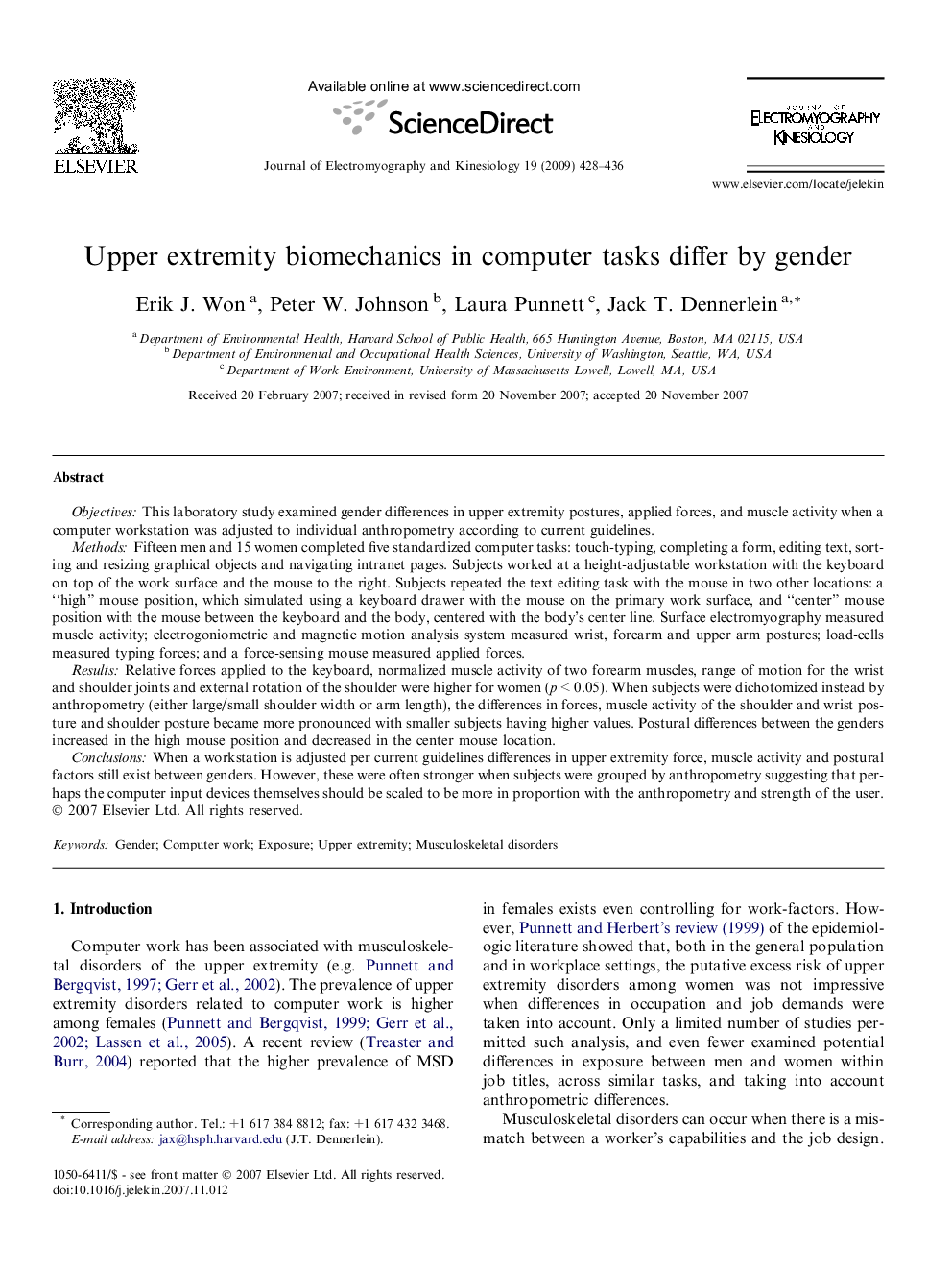| Article ID | Journal | Published Year | Pages | File Type |
|---|---|---|---|---|
| 4065340 | Journal of Electromyography and Kinesiology | 2009 | 9 Pages |
ObjectivesThis laboratory study examined gender differences in upper extremity postures, applied forces, and muscle activity when a computer workstation was adjusted to individual anthropometry according to current guidelines.MethodsFifteen men and 15 women completed five standardized computer tasks: touch-typing, completing a form, editing text, sorting and resizing graphical objects and navigating intranet pages. Subjects worked at a height-adjustable workstation with the keyboard on top of the work surface and the mouse to the right. Subjects repeated the text editing task with the mouse in two other locations: a “high” mouse position, which simulated using a keyboard drawer with the mouse on the primary work surface, and “center” mouse position with the mouse between the keyboard and the body, centered with the body’s center line. Surface electromyography measured muscle activity; electrogoniometric and magnetic motion analysis system measured wrist, forearm and upper arm postures; load-cells measured typing forces; and a force-sensing mouse measured applied forces.ResultsRelative forces applied to the keyboard, normalized muscle activity of two forearm muscles, range of motion for the wrist and shoulder joints and external rotation of the shoulder were higher for women (p < 0.05). When subjects were dichotomized instead by anthropometry (either large/small shoulder width or arm length), the differences in forces, muscle activity of the shoulder and wrist posture and shoulder posture became more pronounced with smaller subjects having higher values. Postural differences between the genders increased in the high mouse position and decreased in the center mouse location.ConclusionsWhen a workstation is adjusted per current guidelines differences in upper extremity force, muscle activity and postural factors still exist between genders. However, these were often stronger when subjects were grouped by anthropometry suggesting that perhaps the computer input devices themselves should be scaled to be more in proportion with the anthropometry and strength of the user.
